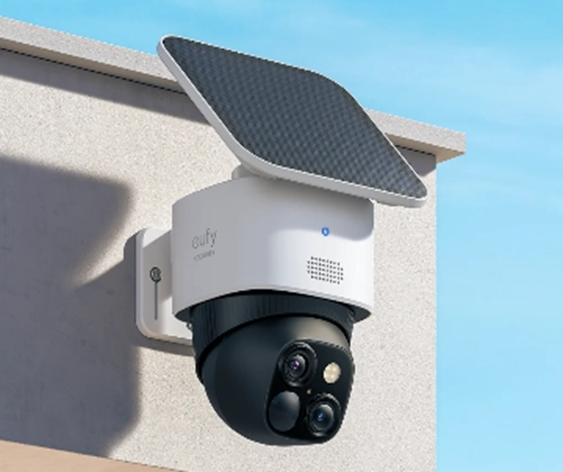
Home security is a growing concern for many homeowners, and choosing the right camera system can feel overwhelming. Among the options available, PTZ (Pan-Tilt-Zoom) cameras stand out for their flexibility and advanced features. But are they the best fit for your home? In this article, we’ll explore the pros of PTZ cameras, compare them to fixed alternatives, and help you decide based on your specific needs.

Key Advantages of PTZ for Homes
Wide Coverage: Single Camera Replaces Multiple Fixed Units
One of the biggest benefits of a PTZ security camera is its ability to cover a large area with just one device. Unlike fixed cameras, which are locked in a single direction, PTZ cameras can pan (move side to side), tilt (move up and down), and zoom in or out. This means you can monitor your entire backyard, driveway, or front porch without needing multiple cameras. For homeowners with expansive properties, this reduces both installation complexity and cost. Additionally, many PTZ cameras come with preset positions, allowing them to automatically scan different zones at scheduled times. This ensures no blind spots are left unchecked, providing comprehensive surveillance with minimal effort.
Active Tracking: Follows Intruders Automatically
Another standout feature of PTZ cameras is their ability to track movement automatically. Advanced models use motion detection and AI-powered algorithms to follow people, animals, or vehicles as they move across the camera’s field of view. This is especially useful for deterring trespassers or monitoring suspicious activity in real time. If someone enters your property, the camera can lock onto them and follow their path, sending instant alerts to your phone. Unlike fixed cameras that only capture a static frame, PTZ cameras provide dynamic surveillance, making them ideal for high-security needs. Some models even integrate with smart home systems, allowing you to control the camera’s movements remotely.
Zoom Capability: Identifying Details at Long Distances
PTZ cameras excel in situations where detail matters. With powerful optical zoom lenses, these cameras can focus on distant objects without losing image quality. For example, if a stranger is lingering near your gate, a PTZ camera can zoom in to capture their face or license plate clearly. This is something fixed cameras struggle with, especially at night or in low-light conditions. Many PTZ cameras also feature digital zoom, though optical zoom is preferable for clearer images. Whether you need to monitor a large backyard or keep an eye on a remote part of your property, the zoom functionality ensures you won’t miss critical details.

When Fixed Cameras Are Better
Small Yard Coverage
While PTZ cameras offer impressive coverage, they might be overkill for small properties. If your home has a compact yard or limited entry points, fixed cameras can provide sufficient monitoring at a lower cost. Fixed cameras are simpler to install and maintain, making them a practical choice for urban homes or apartments. Since they don’t have moving parts, they’re also less prone to mechanical failures. For basic surveillance needs—like watching a front door or a backyard gate—fixed cameras deliver reliable performance without unnecessary complexity.
Budget-Conscious Solutions
PTZ cameras tend to be more expensive than fixed models, both in terms of initial cost and ongoing maintenance. If you’re on a tight budget, investing in multiple fixed cameras might give you better coverage for the same price. Additionally, PTZ cameras require more power and sometimes specialized mounting equipment, adding to the overall expense. For cost-effective security, fixed cameras paired with motion-activated lights or alarms can be just as effective for deterring intruders.
24/7 Recording Needs
Fixed cameras are better suited for continuous recording since they don’t move and can cover a specific area nonstop. PTZ cameras, while versatile, can’t monitor every angle simultaneously. If they’re tracking movement in one direction, they might miss activity elsewhere. For homeowners who need uninterrupted surveillance—such as recording all foot traffic near a garage or driveway—fixed cameras with wide-angle lenses are a more reliable choice. Many fixed models also support high-capacity storage options, ensuring footage is always available when needed.
Installation & Maintenance Tips
Installing a PTZ camera requires careful planning. Since these cameras move, they need a sturdy mount to prevent shaking or misalignment. Position them at a high vantage point to maximize coverage, and ensure they’re protected from harsh weather if placed outdoors. Regular maintenance is also important—check for dust on lenses, test the motorized movements periodically, and update firmware to keep security features up to date. For fixed cameras, placement is simpler, but avoid pointing them directly at light sources to prevent glare.
Conclusion
When deciding between PTZ (Pan-Tilt-Zoom) cameras and fixed cameras, it’s important to consider your property’s size, budget, and security priorities. For larger properties, PTZ cameras are advantageous as they offer wide coverage. If you require active tracking of intruders, PTZ cameras are ideal for this purpose. However, if you’re working with a limited budget, fixed cameras are a more cost-effective solution. Additionally, for smaller spaces, fixed cameras can provide sufficient monitoring. By weighing these factors, you can select the best system to ensure your home remains secure.
